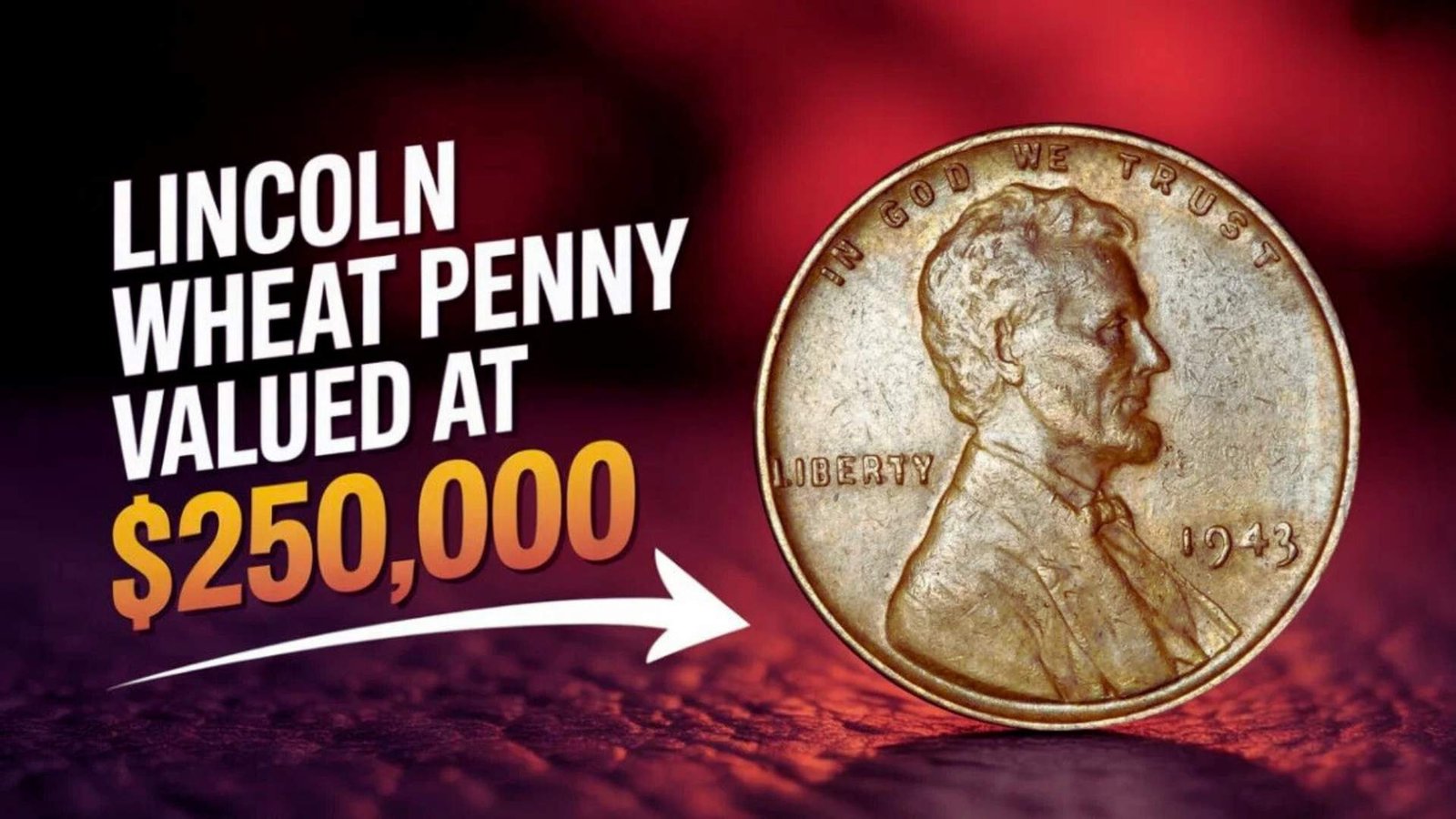Imagine picking up a penny from your pocket and realizing it’s not just one cent—it’s worth a quarter of a million dollars. Sounds unbelievable, right? Yet, a rare Lincoln Wheat Penny has shocked collectors with a jaw-dropping value of $250,000, and here’s the twist—it may still be circulating undetected today.
What Is the Lincoln Wheat Penny?
The Lincoln Wheat Penny, also known as the “wheat cent,” was first issued in 1909 to honor President Abraham Lincoln’s 100th birthday. Its design features Lincoln’s portrait on the obverse and two wheat stalks on the reverse, symbolizing prosperity. Although billions were minted, a few rare varieties have become legendary.
The Mystery of the $250,000 Penny
The penny making headlines is a rare error coin, meaning it was struck with unusual conditions or mistakes. Specific versions, such as the 1943 Bronze Wheat Penny and the 1944 Steel Penny, command massive premiums at auctions. Depending on condition and rarity, one lucky find could be worth as much as $250,000.
History Behind the Rarity
During World War II, the U.S. Mint experimented with coin compositions to save copper for military use. In 1943, pennies were struck in steel with a zinc coating, but a few copper planchets from 1942 slipped through, creating the ultra-rare 1943 Bronze Cent. Similarly, some 1944 steel cents were minted in error, adding to the list of coveted coins.
Why This Penny Is Valuable Today
Value comes from three factors—rarity, demand, and historical significance. A standard wheat penny may only be worth a few cents, but a coin struck in the wrong metal or with an unusual mintmark can skyrocket in value. With collectors worldwide hunting these rare coins, prices have soared to astonishing levels.
How to Spot a Rare Lincoln Wheat Penny
You don’t need to be an expert to start looking. Check the date and mintmark closely. Pennies from 1943 and 1944 are the most suspicious years. If you spot a 1943 copper penny or a 1944 steel penny, you may be holding a fortune. Weight can also help: steel cents weigh 2.7g, while copper cents weigh 3.11g.
Key Rare Wheat Pennies and Their Values
| Year | Composition | Notable Feature | Value Range |
|---|---|---|---|
| 1943 Bronze Wheat Penny | Copper | Wrong metal for the year | $100,000 – $250,000 |
| 1944 Steel Wheat Penny | Steel | Struck in leftover planchets | $50,000 – $150,000 |
| 1909-S VDB | Copper | Very low mintage, initials VDB | $1,000 – $50,000 |
| 1914-D | Copper | Scarce mint issue | $500 – $15,000 |
| 1922 No D | Copper | Missing mintmark | $500 – $12,000 |
Shocking Facts About Wheat Pennies
- A single 1943 Bronze Penny sold for $1.7 million at auction.
- Even circulated rare pennies can fetch thousands.
- Many are still out there—possibly in old jars or pocket change.
Expert Tips for Coin Hunters
- Weigh suspicious coins to confirm composition.
- Use a magnet: steel pennies will stick, copper won’t.
- Get professional grading: PCGS or NGC certification ensures authenticity and maximizes value.
- Check inherited collections: Many families unknowingly store rare coins in jars or albums.
FAQs
Q: Can these rare pennies still be found in circulation?
A: Yes, though rare, they occasionally surface in pocket change or old collections.
Q: What’s the rarest wheat penny?
A: The 1943 Bronze Wheat Penny is the most famous, valued up to $250,000.
Q: Where can I sell one if I find it?
A: Auctions, certified dealers, or major coin shows are the best outlets.
Conclusion: Check Your Pennies Before You Spend Them
The next time you spot a wheat penny, don’t dismiss it as just another old coin. That tiny cent could be a life-changing $250,000 treasure hiding in plain sight. Whether it’s the 1943 Bronze Penny or another rare issue, the thrill of discovery is what keeps collectors searching. Your pocket change may just hold history—and fortune.

